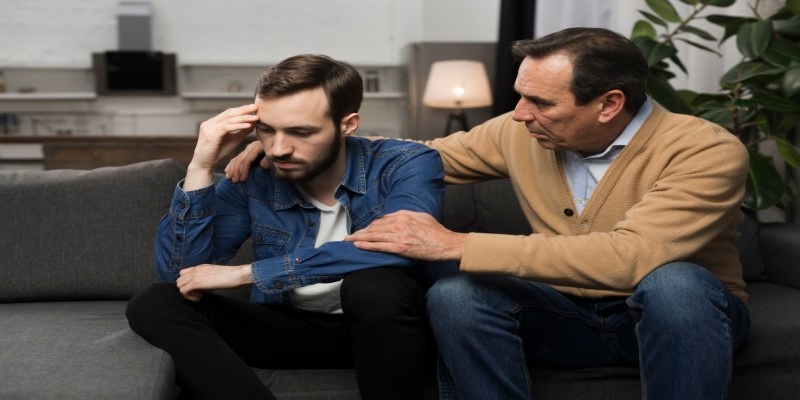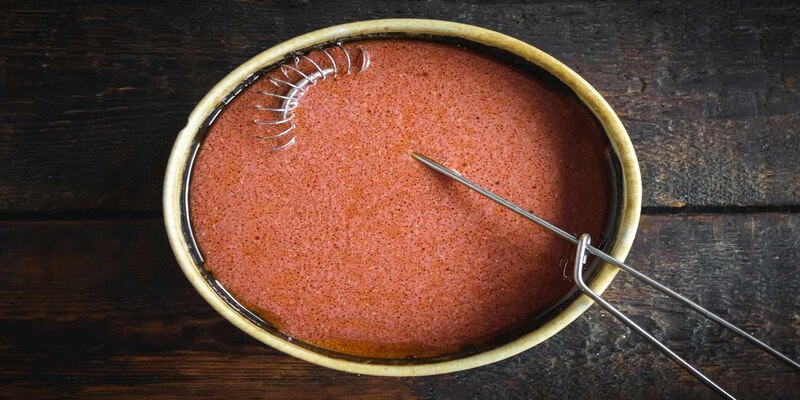Many people do squats daily but do not suffer from knee pain. Only those who practice it wrong face the consequences, like knee injury or pain. Squats are essential in improving core strength and stability but one incorrect step can lead to discomfort for you.
Why should fitness enthusiasts like you know the root causes of knee pain during squats? If you ignore the initial pain, it will cause long-term damage and severe injuries. With this condition, there is a possibility of spraining your ankle or arthritis in the severe condition.

Knee injury from squats is a discomfort experienced because of many reasons. You may feel sudden pain or a pulling sensation while squatting. The following are some common reasons for your knee pain during squats:
It is the inflammation of the fibrous cord that connects the muscles with the bones. It can occur anywhere in the body where the tendon is present. Commonly, it occurs at the shoulders, elbows, knees, wrists, and heels. Applying force with repetitions like continuous jumping may cause knee pain during squatting.
The knee pain while squats are practiced is mainly due to the incorrect technique. It includes poor posture like ankles, knees, and hips in the wrong position can cause severe strains in the muscles. You can do correct squatting by following these things:
Twisting is the major reason after incorrect posture that causes knee pain during squats. This twist will sprain your ankle, which is painful and causes swelling.
Squats are also practiced by lifting weights for more challenging reps. If you are exercising like this and can worsen knee pain during the quest. In this condition, our body uses extra weight and pulls forward, causing pain in the knees. To solve this problem, try lifting a lower weight suitable to your body's strength.
It is also known as a runner's knee that includes an ache behind or around the kneecap. This is caused by irritation there and can get worse as knee pain during squats. The most common symptoms include redness, tenderness, and clicking sensation. It is called a runner's knee because it is the most common condition among athletes.
It is among the most common types of arthritis that includes the loose cartilage at the at of the knee joint bones. It occurs with age and causes friction in the joints, and thus, aches and stiffness. The symptoms include inflammation, pain, tenderness, stiffness, and bone spurs. The squatting compresses the cartilage and enhances friction between the bones.
It is among the most common knee cartilage injuries that cause knee pain during squats. There is a C-shaped cartilage disc called the meniscus to cushion the knee. Just like other things degrade with age, this cartilage also changes. It's a completely natural thing that causes knee pain, stiffness, swelling, etc.
Gluteal muscles have a big role in supporting the knee joints. If one experiences weak glute muscles, it will cause knee pain while squatting. Besides, you'll have stiffness, tenderness, and balanced tissues.
The main reason for this pain is muscle imbalances or lack of joint movement. To avoid having severe or painful conditions, we have provided the following precautions you can follow:

According to Dr. Anderson, when we talk about improving knee pain, we talk about improving its mobility. Start with the child's pose and knee-to-chest stretch exercises to begin improving. According to a physical therapist, one muscle may be stronger than the other in a group. These will help your knees go through their full mobility while using less weight.
You must follow the most important prevention to avoid knee pain during squats. Follow these instructions to keep your squats accurate:
Some people do squats, mostly using the knees instead of hip muscles. When they use these muscles, it enables them to practice more accurately with less knee pain. Most of the time, using the knees only causes joint pain that will affect your workout. When we practice things with more focus, we are more likely to prevent things that cause issues.
If you are facing knee pain while squatting, we recommend using authentic ways to relieve your pain. The most common technique used is RICE, which involves four components:

For this pain, physical therapy treatment is used for those who don't want to be treated using any equipment. With this treatment, you'll see gradual improvement to regain strength. Some exercises are also here that strengthen the muscles for knee movement by working 4-8 weeks.
Medications like anti-inflammatory or non-steroidal reduce knee pain and swelling. The doctors will prescribe medication based on the intensity of the pain. These medications are necessary to resolve the physical injuries, after which physiotherapy can work.
Squatting is an important thing that helps you in everyday life by reducing back pain. Knee pain during squats causes discomfort and makes it hard to follow this workout. For this, you must treat or prevent yourself from returning to your favorite routine. Dont let this pain stop you having a healthy life everyday.

By Vicky Louisa/Sep 05, 2024

By Jennifer Redmond/Sep 24, 2024

By Noa Ensign/Sep 16, 2024

By Alison Perry/Sep 22, 2024
By Jennifer Redmond/Sep 22, 2024

By Isabella Moss/Sep 17, 2024

By Mason Garvey/Sep 24, 2024

By Noa Ensign/Sep 18, 2024

By Darnell Malan/Sep 05, 2024

By Susan Kelly/Sep 06, 2024

By Kristina Cappetta/Sep 22, 2024

By Pamela Andrew/Aug 24, 2024